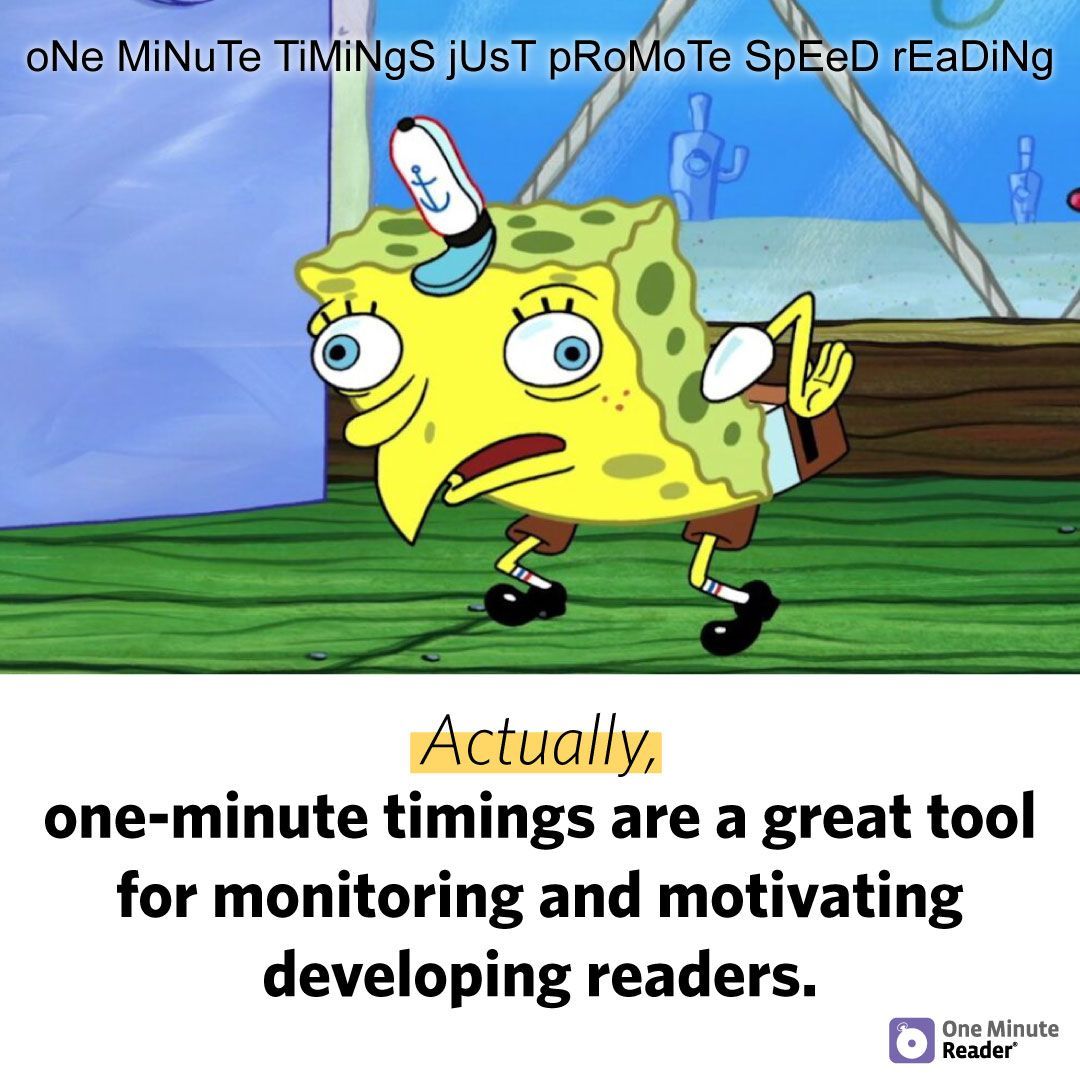Blog
The Magic of One-Minute Timings: Debunking Myths and Promoting Fluency
In the literacy education landscape, one-minute timings often find themselves at the center of discussion—and sometimes misconception.
Critics argue that these timings only foster stress and promote speed reading. It’s true that one-minute timings, when introduced without proper framing, can indeed lead to stress or a misguided emphasis on speed. But that isn’t the whole truth. When used in an appropriate way, one-minute timings can be a highly useful tool.
The purpose of a one-minute timing is to measure oral reading fluency. Oral reading fluency is where a lot of misunderstandings around speed reading are born. Oral reading fluency is made up of three components: accuracy, expression, and rate. Rate is only one of three essential components, and it does not equate to speed reading. Rather, oral reading rate is about reading at a pace that is natural and conversational.

Developing oral reading fluency is essential because it is the gateway to automaticity and thus comprehension. As readers become more fluent, their cognitive load is lessened, allowing them to concentrate more on comprehending the text.
One-minute timings are a valuable tool for developing oral reading fluency. They are not about pushing developing readers to read faster, faster, faster—rather, they are a precise tool for measuring progress. One-minute timings can provide educators and parents with concrete data, allowing them to accurately track growth in reading.
Additionally, kids are motivated by seeing their own progress, and words-correct-per-minute graphs serve as great visual representations of their improvement. Having concrete data about their growth is highly motivating for developing readers. What’s more, one-minute timings are short, accessible, and effective assessments for reluctant readers who may be intimidated by the idea of a reading assessment or who struggle with reading stamina.
Now, it’s natural for kids to turn on that “speed reading switch” when they know they're being timed. Some kids may need a reminder that the one-minute timings serve as practice. With practice, they will improve—and the timings will reflect that. By emphasizing the purpose behind timings as a measure of growth, rather than a race, parents can frame this exercise in a way that motivates kids and allows them to reach their reading goals more quickly. For more tips on nipping the speed-reading tendency in the bud, check out our blog, 7 Tips to Slow Down Your Speed Readers.
One-minute timings, when used responsibly, are a fantastic tool to support educators and parents in fostering and supporting the growth of developing readers.
Highlighted Posts


Ready to see an improvement in your child's reading?
Sign up today and get seven days for FREE.
One Minute Reader is just $8 per month after your free trial.
